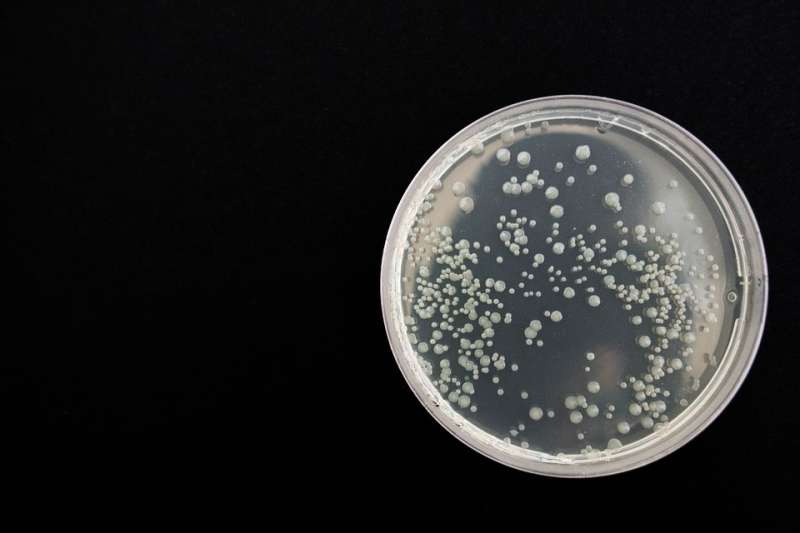Resource availability drives person-to-person variations in microbes living in the body

The collection of microbial species found in the human body varies from person to person, and new research published in PLOS Computational Biology suggests that a significant part of this variation can be explained by variability in shared resources available to the microbes.
Every human is home to a collection of thousands of diverse species of microbes known as the microbiota. Ecological processes, such as competition for resources, help determine each person's unique collection of species. In the new study, Charles Fisher and colleagues at the École Normale Supérieure in Paris investigate how the availability of resources in the human body impacts the microbiota.
The scientists developed a mathematical model that describes the relationship between the abundance of different microbiota species and the availability of the resources they use. The model is based on the ecological idea that populations of two species that rely on the same resources tend to grow and decline in unison.
The researchers used the model along with new statistical analysis methods to reanalyze data from the Human Microbiome Project, which used data from hundreds of people to identify microbial species that live in or on different parts of the human body. This analysis confirmed that variations in resources available in different body sites can explain the relative abundance of different species in those sites.
The analysis also showed similar results between humans. Within a single body site, person-to-person variations in the availability of shared resources can explain much of the variation in the abundance of different microbial species between people.
Additionally, the analysis revealed that species that share common resources tend to be closely related taxonomically. While most previous studies of the human microbiota have focused on direct interactions between pairs of microbial species, these new findings suggest that the correlation between the relative abundance of two species depends on how closely they are related.
This study focused on the microbiota of healthy humans, but future studies could explore the role of resource availability in disease. "The methods we developed in this paper will enable scientists to examine the role of shared resources in diseases related to the microbiota, such as Crohn's disease," Fisher says. "Potentially, one could use these results to develop strategies for treating dysbiosis."
More information: Fisher CK, Mora T, Walczak AM (2017) Variable habitat conditions drive species covariation in the human microbiota. PLoS Comput Biol 13(4): e1005435. doi.org/10.1371/journal.pcbi.1005435
Journal information: PLoS Computational Biology
Provided by Public Library of Science




















